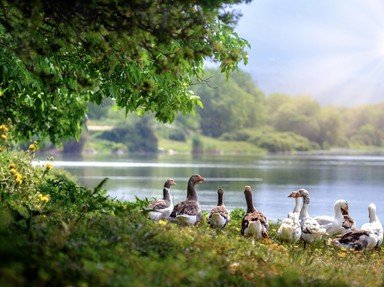Quiz Answer Key and Fun Facts
1. This cackling species is not a witch, but an miniature version of a larger relative.
2. Black terns are white for large portions of the year. The wings of red-winged blackbirds are actually black. And ringed-necked ducks have a ring on their bill. So if you saw an adult male indigo bunting perched on the top of a bush in the full sun, what color would it be?
3. This bird of prey can be said to be synonymous with the Everglades and dines on escargot.
4. This crazy diver is portrayed on the Canadian dollar. What is it?
5. You see a large bird soaring overhead. It is mostly brown, but shows some white in the tail and white in the "armpits". What is it?
6. What do goatsuckers eat?
7. What is the only state in the US where all 3 kingfisher species regularly occurring in North American can be found?
8. Since the fall migration of birds south across the Gulf of Mexico coincides with hurricane season, birds sometimes fly into hurricanes and are killed. When their bodies are washed up on shore, why is it frequently so hard to determine their species?
9. What do the snail kite and the limpkin have in common?
10. The gray flycatcher is a member of the Empidonax genus. Empids as a group are dreaded because they all look and act so much alike. The gray flycatcher, however, has one behavior that is unique. What is it?
Source: Author
wingo
This quiz was reviewed by FunTrivia editor
crisw before going online.
Any errors found in FunTrivia content are routinely corrected through our feedback system.


